Abstract
Quantitative analysis of indole-3-acetic acid (IAA) using selected ion monitoring gas chromatography-mass spectrometry (GC-MS) with 13C6[benzene ring]-IAA as the internal standard was used to compare the quantitative accuracy of commercial enzyme-linked immunoabsorbent assay (ELISA) kits. Plant materials differed in the amount of purification required prior to use of ELISA for reliable estimates to be made. Purification similar to that obtained by at least one high performance liquid chromatographic (HPLC) step was generally necessary prior to ELISA analysis of plant materials. Additional levels of purification appeared to be required for some plant materials prior to HPLC in order to obtain an accurate estimate by ELISA techniques. In no case was it possible to obtain reasonable estimates of IAA from crude extracts or even from acidic fractions of extracts of plant tissues. GC-MS techniques provide a rapid and simple method for checking the validity of ELISA techniques. Quantitative GC-MS, or a similar technique that provides an independent quantitative validation, should, whenever possible, be applied to each new plant material under study if use of the ELISA is planned.
Full text
PDF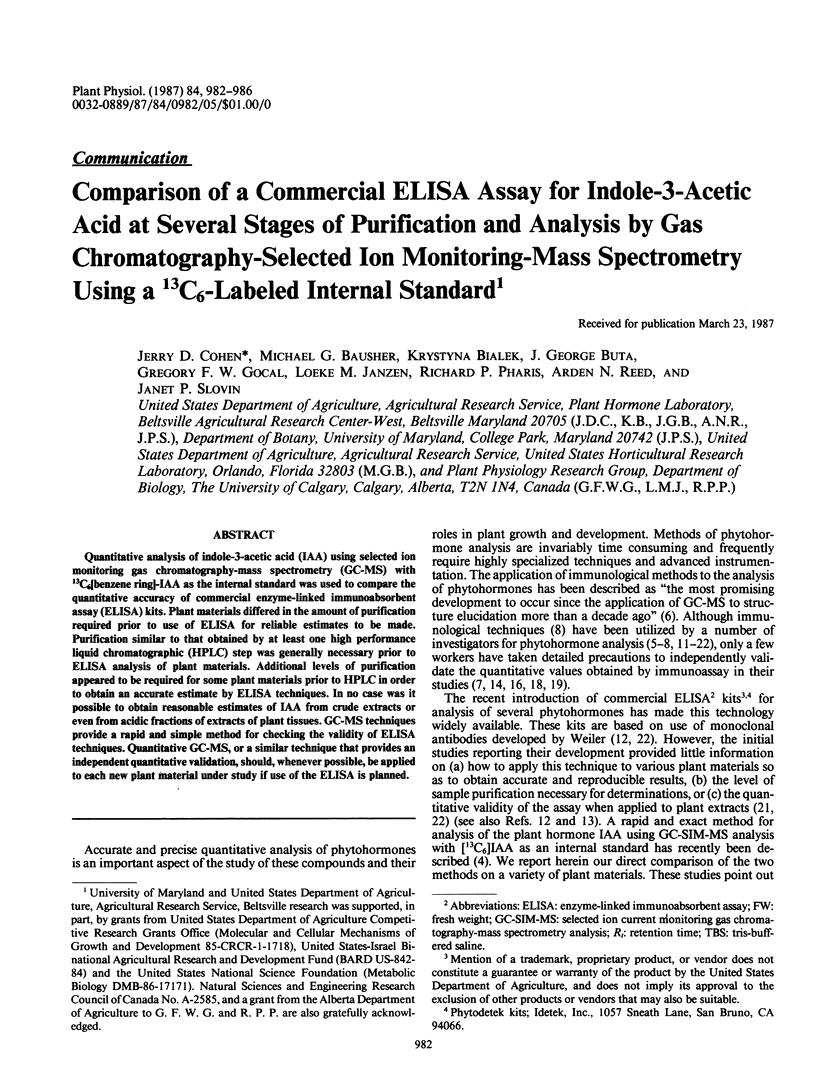
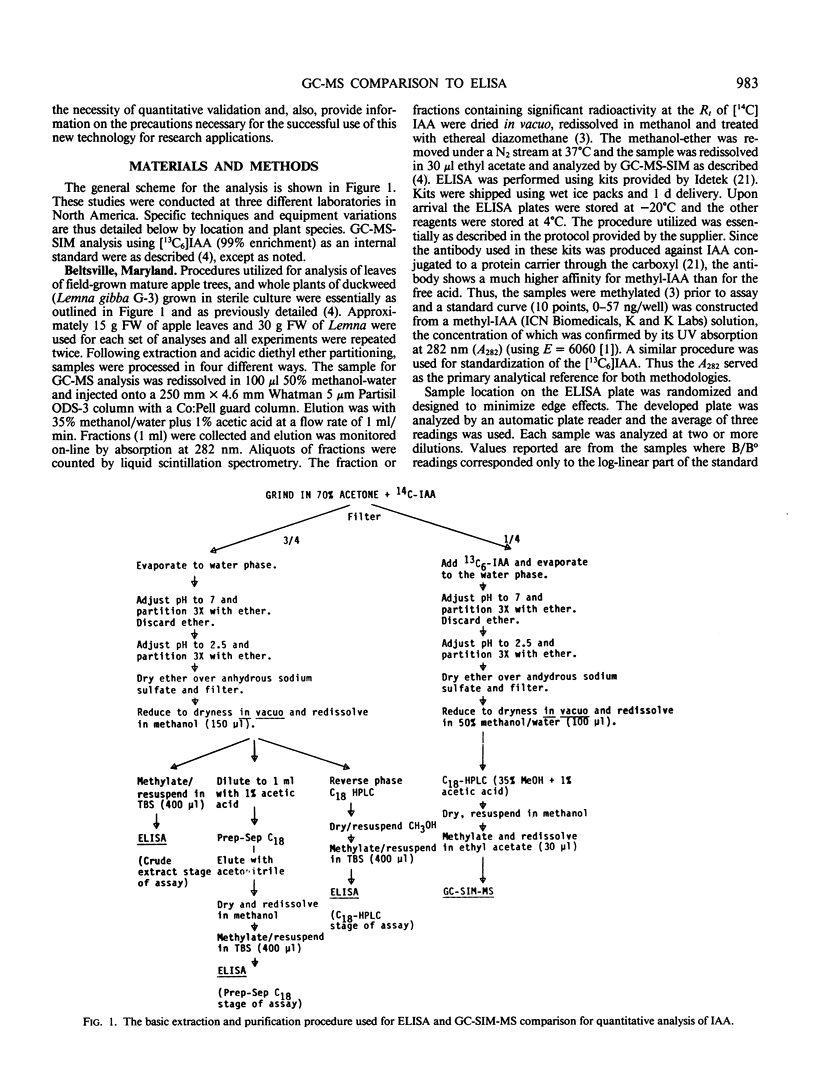
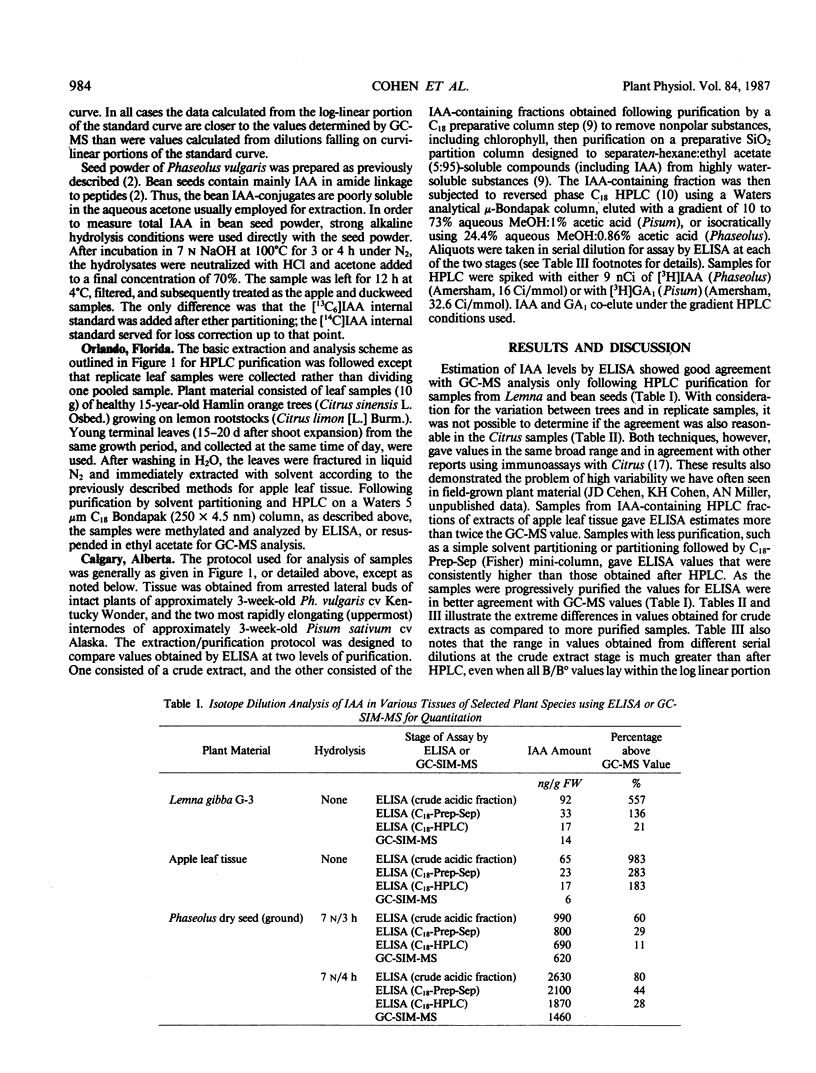
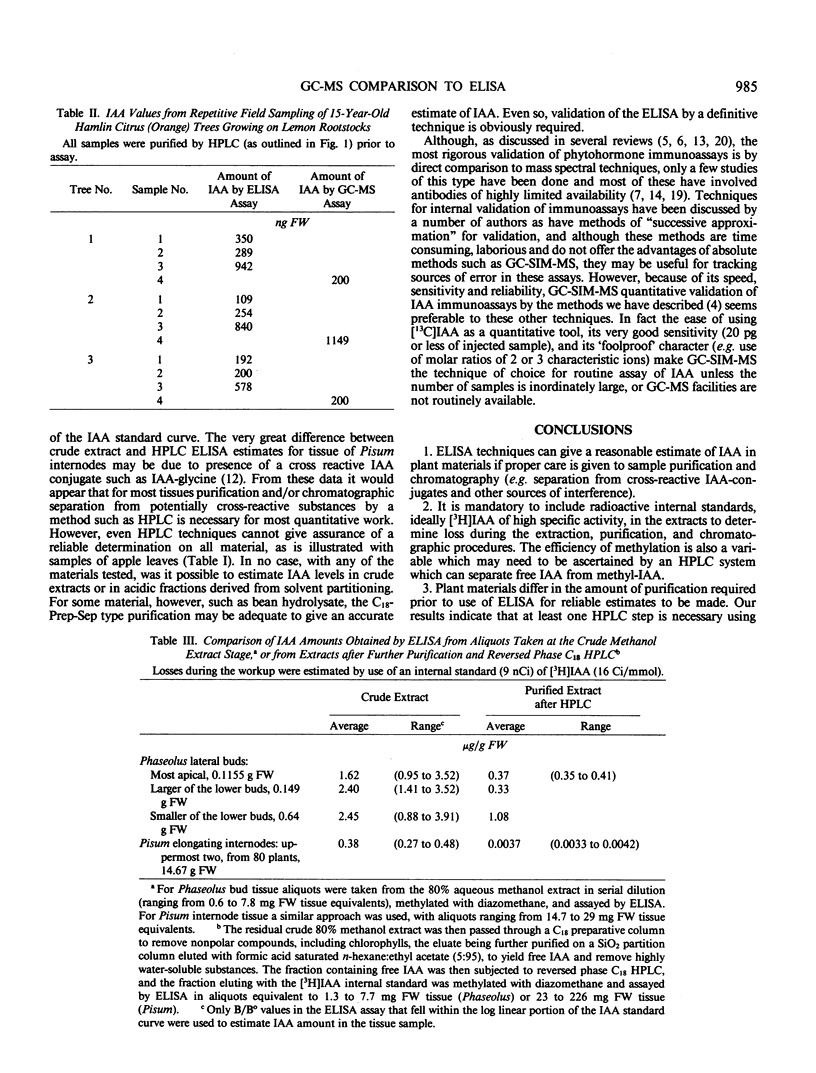
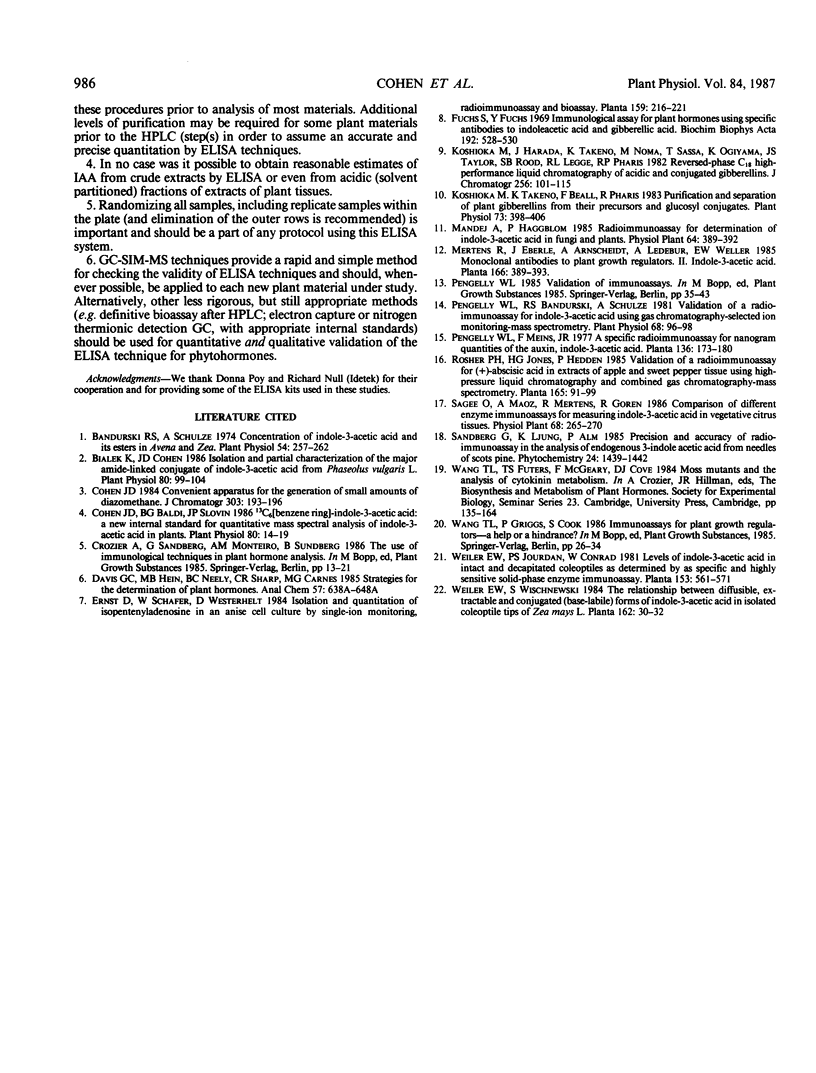
Selected References
These references are in PubMed. This may not be the complete list of references from this article.
- Bandurski R. S., Schulze A. Concentrations of Indole-3-acetic Acid and Its Esters in Avena and Zea. Plant Physiol. 1974 Sep;54(3):257–262. doi: 10.1104/pp.54.3.257. [DOI] [PMC free article] [PubMed] [Google Scholar]
- Bialek K., Cohen J. D. Isolation and Partial Characterization of the Major Amide-Linked Conjugate of Indole-3-Acetic Acid from Phaseolus vulgaris L. Plant Physiol. 1986 Jan;80(1):99–104. doi: 10.1104/pp.80.1.99. [DOI] [PMC free article] [PubMed] [Google Scholar]
- Cohen J. D., Baldi B. G., Slovin J. P. C(6)-[benzene ring]-indole-3-acetic Acid: a new internal standard for quantitative mass spectral analysis of indole-3-acetic Acid in plants. Plant Physiol. 1986 Jan;80(1):14–19. doi: 10.1104/pp.80.1.14. [DOI] [PMC free article] [PubMed] [Google Scholar]
- Fuchs S., Fuchs Y. Immunological assay for plant hormones using specific antibodies to indoleacetic acid and gibberellic acid. Biochim Biophys Acta. 1969 Dec 30;192(3):528–530. doi: 10.1016/0304-4165(69)90404-8. [DOI] [PubMed] [Google Scholar]
- Koshioka M., Takeno K., Beall F. D., Pharis R. P. Purification and separation of plant gibberellins from their precursors and glucosyl conjugates. Plant Physiol. 1983 Oct;73(2):398–406. doi: 10.1104/pp.73.2.398. [DOI] [PMC free article] [PubMed] [Google Scholar]
- Pengelly W. L., Bandurski R. S., Schulze A. Validation of a radioimmunoassay for indole-3-acetic Acid using gas chromatography-selected ion monitoring-mass spectrometry. Plant Physiol. 1981 Jul;68(1):96–98. doi: 10.1104/pp.68.1.96. [DOI] [PMC free article] [PubMed] [Google Scholar]


